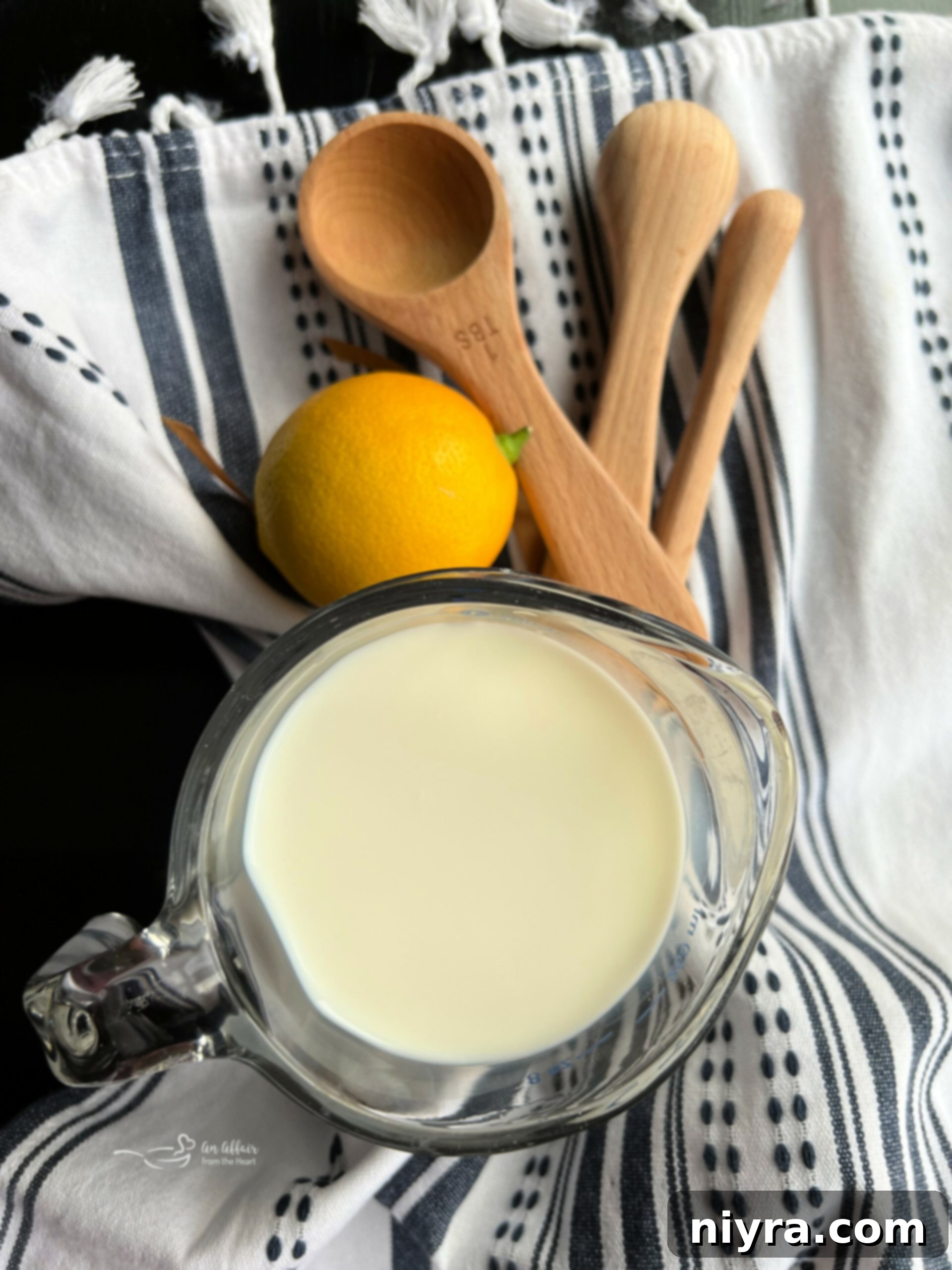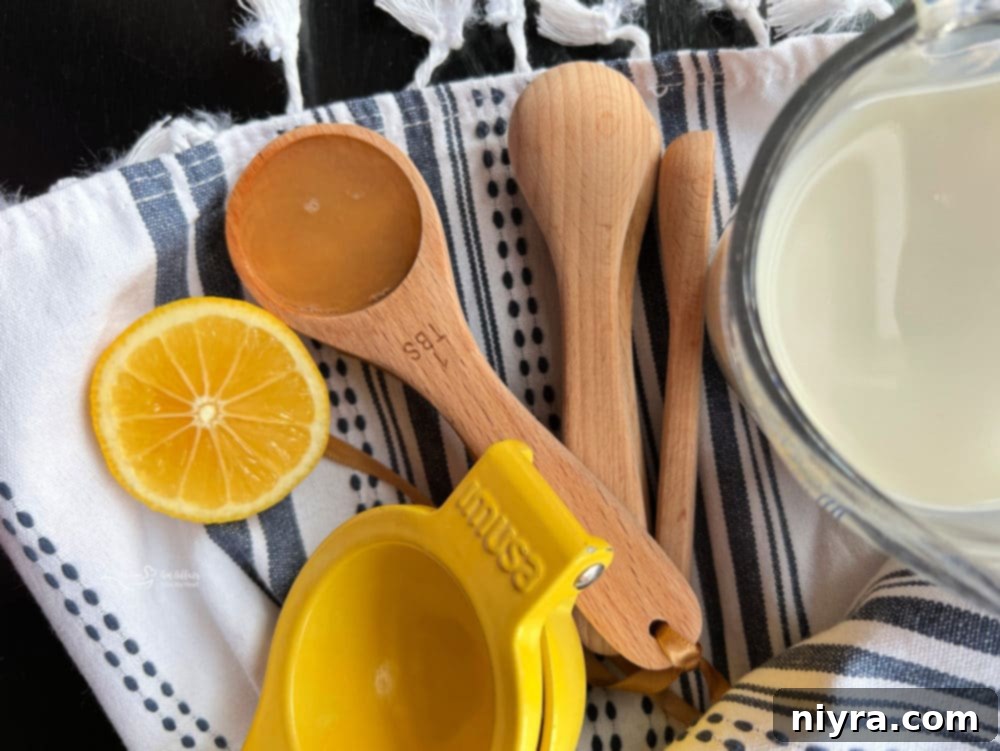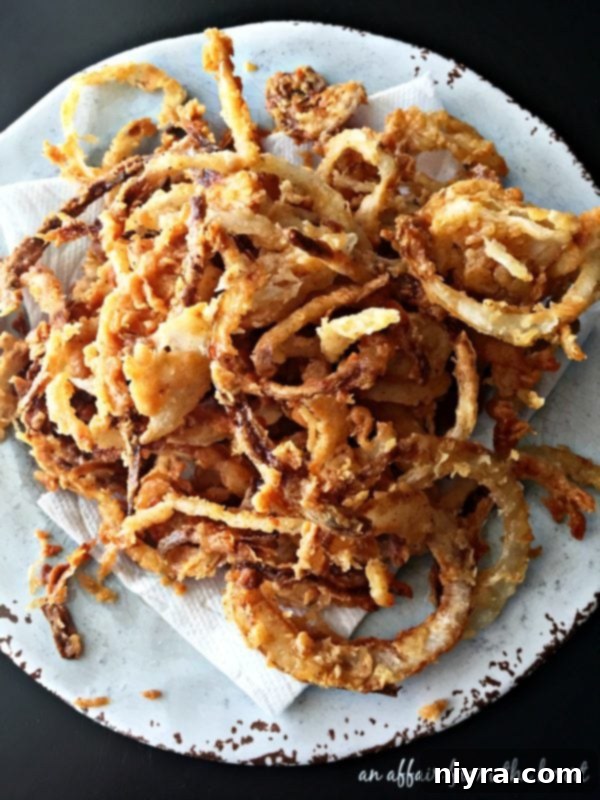Mastering the Buttermilk Substitute: Your Simple Kitchen Hack for Perfect Baking
Have you ever found yourself in the middle of preparing a recipe, only to realize you’re out of buttermilk? It’s a common culinary dilemma that can bring your baking plans to a screeching halt. For years, I faced this exact problem, constantly finding myself without buttermilk when a recipe called for it. But those days are long gone! Today, I rarely even bother buying buttermilk from the store because making a fantastic homemade buttermilk substitute is incredibly easy and quick. All you need are two basic ingredients – milk and a common kitchen acid like lemon juice or white vinegar – and about ten minutes of your time. This simple trick ensures you’re always ready to bake, no matter what your recipe demands, bringing a beautiful tang and tender crumb to all your favorite dishes.

It used to be a source of frustration. I’d glance at a recipe’s ingredient list, spot “buttermilk,” and immediately think, “Well, time to find a new recipe.” My pantry was rarely stocked with this fermented dairy product, and a last-minute trip to the grocery store often wasn’t feasible. That all changed about a decade ago when I discovered the simple secret: you can effortlessly make a high-quality buttermilk substitute from milk right in your own kitchen. This revelation transformed my baking habits and opened up a world of recipes I once shied away from.
Now, whether I’m craving a rich coffee cake, preparing to bread some chicken for a crispy coating, or whipping up some delectable homemade Indian fry bread, I don’t give it a second thought. There’s no stress or last-minute grocery dash. I simply take a few minutes to mix up a fresh batch of buttermilk replacement before I even start gathering my other ingredients. It’s a game-changer for any home baker.

What Exactly is a Buttermilk Substitution?
At its core, buttermilk is a fermented milk product renowned for its slightly sour taste and thicker consistency. The good news is, you can easily replicate these desirable qualities at home using a readily available acid. A buttermilk substitute is essentially milk that has been curdled by an acid, most commonly lemon juice or white vinegar. The acid reacts with the milk proteins, causing them to curdle and thicken slightly, mimicking the texture and tangy flavor of traditional buttermilk. This simple chemical reaction takes mere minutes, providing you with a perfectly usable alternative without ever needing to leave your kitchen.
Understanding Buttermilk: Traditional vs. Cultured
To truly appreciate the value of a good substitute, it helps to understand what buttermilk is. Historically, traditional buttermilk was the liquid left behind after churning butter from cultured cream. This byproduct was naturally tangy and slightly thick. However, the buttermilk you find in most grocery stores today, packaged in cartons, is typically “cultured buttermilk.” This version is made by adding lactic acid bacteria to pasteurized milk. These friendly bacteria ferment the milk, consuming lactose and producing lactic acid, which gives the milk its characteristic tang, slightly thicker consistency, and helps tenderize baked goods while activating leavening agents like baking soda. This cultured buttermilk is what most recipes call for, and it’s this tangy, acidic quality that our homemade substitute aims to replicate.
How to Make Your Own Buttermilk Substitution
Creating your own homemade buttermilk substitute is incredibly straightforward. It’s a quick, two-ingredient process that yields reliable results every time. When I’m in need, I usually opt for a fresh lemon if one is on hand. The bright, fresh citrus notes are lovely. If not, bottled lemon juice from the fridge works just as effectively. Alternatively, if you don’t have lemon juice, standard white vinegar is an excellent and equally reliable choice for achieving that desired tang and consistency in your baking. Both acids work by increasing the acidity of the milk, causing it to curdle.
The process is simple: combine the milk with your chosen acid (either lemon juice or white vinegar) in a liquid measuring cup. Give it a gentle stir, then let the mixture stand undisturbed for approximately 10 minutes. During this brief waiting period, you’ll witness the magic happen. The milk will begin to thicken slightly, and small, distinct curds will become visible. This is your visual cue that the substitution is working perfectly and is ready to be incorporated into your recipe. You’ll be amazed at how quickly and effectively this method provides you with the perfect buttermilk texture and flavor.

What Kind of Milk to Use for a Buttermilk Substitution
One of the best aspects of making your own buttermilk substitute is its versatility regarding milk type. You can truly use whatever milk you have available in your refrigerator. The primary goal is to introduce acidity and achieve that characteristic tang and slight curdling. This means that whether you prefer whole milk, 2%, or skim milk, the substitution will work effectively. The fat content of the milk will have a minor impact on the richness of your final baked good, but the curdling process will occur regardless.
Furthermore, for those with specific dietary needs or preferences, this method is highly adaptable. If you’re looking to reduce calories, feel free to use skim milk. More impressively, this technique also works wonderfully with most non-dairy or vegan milk alternatives, such as almond milk, soy milk, or oat milk. Just ensure that the non-dairy milk you choose is unflavored and unsweetened to avoid altering the taste of your recipe. This flexibility makes homemade buttermilk an inclusive solution for almost any baker.
How to Use Your Homemade Buttermilk Substitute
Once you’ve made your batch of homemade buttermilk, using it in your recipes couldn’t be simpler. You incorporate it into your cooking or baking exactly as you would store-bought buttermilk. The beauty of this buttermilk substitute recipe is that it’s designed to be a direct, one-for-one replacement. A typical batch, as outlined in this guide, yields approximately 1 cup of buttermilk alternative, which is a common measurement in many recipes. If your recipe calls for less buttermilk, you can easily scale down the quantities of milk and acid. Conversely, if you need more, simply double or triple the recipe proportions. The principle remains the same: use the homemade version in the same exact amount as the recipe specifies for traditional buttermilk. This ensures the correct balance of moisture, acidity, and flavor, delivering the desired results every time.
Can I Store My Homemade Buttermilk Substitute?
While incredibly convenient, homemade buttermilk substitute is best used immediately. Unlike commercially cultured buttermilk, which is designed for a longer shelf life, your quick homemade version is not intended for storage. If you attempt to store your homemade buttermilk for an extended period, especially in the refrigerator, you’ll likely find that the curdling process continues and intensifies. The milk proteins will separate further, resulting in a mixture that becomes increasingly thick and resembles fresh ricotta cheese or cottage cheese rather than liquid buttermilk. While this could be an interesting experiment if you enjoy making homemade ricotta, it won’t be suitable for recipes that specifically call for liquid buttermilk.
Therefore, the best practice is to make only as much buttermilk alternative as you need for your current recipe. This minimizes waste and ensures that the texture and consistency are perfect for your dish. It’s so quick to whip up that there’s truly no need to prepare it in advance and store it.
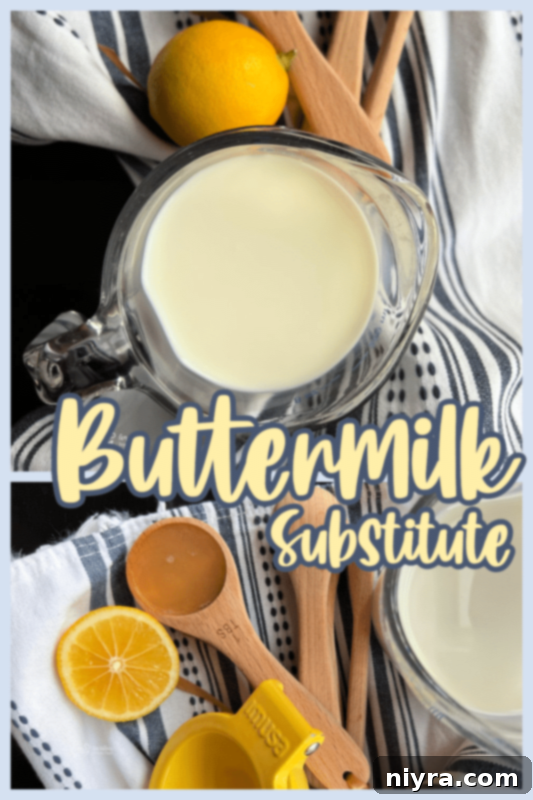
Love This Hack? Pin It for Later!
Don’t let this invaluable kitchen hack slip your mind! This simple guide for a quick and easy buttermilk substitute is a lifesaver for any home baker. Make sure to save it! Pin it to your favorite Pinterest recipe board today so you can effortlessly find it the very next time a recipe calls for buttermilk and your fridge comes up empty. Sharing is caring, and this tip is too good not to keep handy!
What Recipes Can I Use Buttermilk Substitute In?
Buttermilk is a culinary superstar, celebrated for the unique tangy flavor and tender texture it imparts to a vast array of dishes. It’s often considered the “secret ingredient” that elevates everyday staples like fluffy pancakes and melt-in-your-mouth biscuits, making them exceptionally delicious. But its utility extends far beyond breakfast and baked goods! Its acidity works wonders as a tenderizer for meats, an emulsifier for dressings, and a key component in many quick breads and savory dishes. Here are some of my all-time favorite recipes where a good buttermilk replacement truly shines:
- Homemade Onion Strings (pictured above, for an irresistibly crispy coating)
- Corndog Mini Muffins (for a tender, savory bite)
- Spicy Baked Chicken Tenders (helps tenderize and infuse flavor)
- Cranberry Orange Muffins (for a moist crumb and tangy brightness)
- Irish Soda Bread (essential for its characteristic texture and rise)
- Lemon Rhubarb Bundt Cake (adds moisture and a lovely tart contrast)
- Creamy Ranch Dressings (for a perfect tangy base)
- Fried Chicken Marinades (tenderizes and adds flavor)
- Cornbread (ensures a moist, tender crumb)
With this simple homemade buttermilk substitute, you’ll never have to pass up a recipe again due to a missing ingredient. Enjoy the freedom and delicious results this easy kitchen hack provides!

Now, let’s get to whipping up some buttermilk substitute and making delicious magic in the kitchen! 
LIKE THIS RECIPE?
Don’t forget to give it a ⭐️⭐️⭐️⭐️⭐️ star rating and
leave a comment below the recipe!
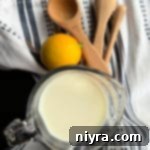
Buttermilk Substitution
I never have buttermilk when I need it, so I always end up making my own!
Equipment
- Zyliss Comfort Utility Knife
- Manual Juicer Citrus / Lemon Squeezer
Ingredients
- 1 scant cup of milk
- 1 Tablespoon of either lemon juice OR white vinegar
Instructions
- Pour vinegar OR lemon juice into one scant cup of milk.
- Let stand for 10 minutes. The milk will begin to curdle.
Notes
Nutrition
This recipe was originally posted on February 22, 2015. It has been updated to improve user experience and reshared on February 17, 2022.
